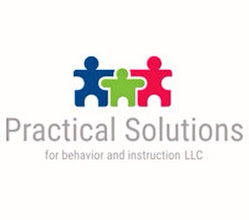Whether you are a new teacher or a veteran, the start of a new school year brings an extensive list of preparations. Here, I will share some top tips to kickstart success!
Before I dive into the list, I want to preface this information by acknowledging that the list may seem like common sense. So why would I take the time to share this information when most teachers are already considering many of these items?
When I was working on my bachelor's degree in sociology, one of my professors posed the question, "How is a candy bar violent?" At the time, he also stated, "None of you will understand this concept now. However, ten years down the road, you will recall this lesson and understand." He was right. We continued to listen as he asked questions and explained the violence that ensues to produce something so simplistic. A simple joy that we indulge in so effortlessly, without regard, and before you know it, the candy bar is gone, consumed and never considered again. There is so much in the making of a candy bar.
Once I understood the lesson, I began to view life in this way, paying close attention to what lies within. This holds true for a classroom. In making the simplicity of a room meaningful to students, there is a great deal that must go into its development. These tips embody so much more than the surface of a simple sentence. At the close of this list, which is not exhaustive by the way, I will provide an example with some detail to consider.
Example: When considering procedures, individual needs, and the physical environment of the classroom, you will want to plan for the execution of each procedure. For instance, upon entering the classroom, students will need to put away their belongings in a designated area, free from cluttering walkways. You should establish a procedure for how students will file into the classroom, put their belongings away, and walk to their seats. Will they line up alphabetically, be called upon based on behavior, be organized by their ability to wait or behavior, or by who is best to stand near one another?
Having systems for all parts of your routine, especially while teaching your students the expectations, rules, policies, and procedures, is critical. How will students be arranged at their seats? Who will be grouped together? Are there any individual accommodations or modifications that must be considered? Starting out hyper-organized will set the tone of the classroom and limit any confusion. It will also highlight areas of need and allow for smoother transitions and necessary adjustments. As your class develops, the environment may become more relaxed without dismantling the structure. Remember to be flexible and make adjustments as needed. Recognize your own mistakes and adjust accordingly. Keep these strategies in mind when new students join the class. If you have any support staff, make sure they are considered in your plans and ensure they clearly understand their role in the class just as each student does. Be certain to hold yourself accountable for adhering to the policies and procedures. Deviating from this will likely cause confusion and frustration for your students.






No comments:
Post a Comment